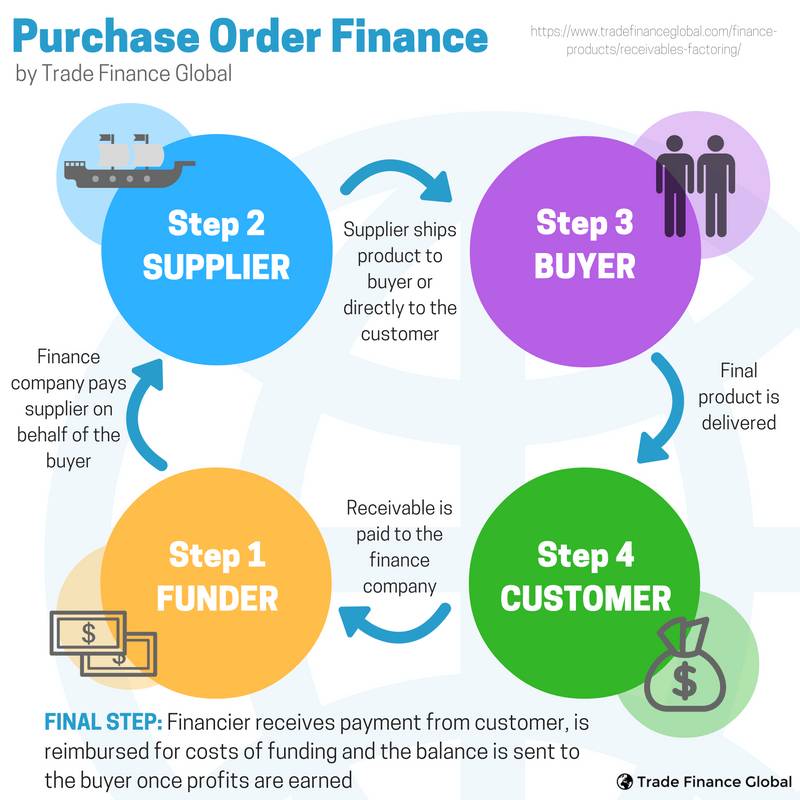- Topics
- Themes
-
Trade
Do you want to know how access to trade finance can increase your cross-border imports and exports? Explore our Trade Finance hub for practical tools.
Treasury
Are you a treasury or operations manager looking to mitigate the risks and efficiently manage your business’ cash flow? If so, check out our Treasury Management hub.
Payments
Whether you want updates from infrastructure support to cross-border transactions or clearing house operations to processing techniques, you can find all on our Payments hub.
Letters of Credit
Ready to to increase your imports / exports to guarantee the payment and delivery of goods? Find out more about LCs here.
Shipping & Logistics
Whether you’re transporting goods, or learning about supply chains, warehousing, transportation and packaging, we’ve got you covered.
Incoterms
Need to know which International Commerce Term is right for your needs? Explore our curated guides from shipping expert Bob Ronai.
Sustainability
Prioritising sustainable supply chains? Building inclusive trade? Working towards the UN’s 2030 SDGs? Read the latest on global sustainable standards vs green-washing here.
Customs
Heading into international markets? From the correct documentation to standardisation, here’s what you need to know for a streamlined customs clearance process.
TradeTech
TradeTech is rapidly evolving to help reduce some of the biggest challenges when it comes to trade. Keep up with these innovations here.
-
- News & Insights
-
News
The latest in Trade, Treasury & Payments - stay up to date on all the changes across the globe.
Magazines
The issues feature experts across the industry on the latest developments with specific themed and regional editions.
Articles
Insights by the industry, for the industry. These include thought leadership pieces, interview write ups and Q&As.
Guides
Working closely with industry experts and trade practitioners we provide inclusive educational guides to improve your technical knowledge and expertise in global trade.
Research & Data
We undertake qualitative and quantitative research across various verticals in trade, as well as create reports with industry association partners to provide in-depth analysis.
Trade Finance Talks
Subscribe to our market-leading updates on trade, treasury & payments. Join the TFG community of 160k+ monthly readers for unrivalled access in your inbox.
-
- Media
- Events
-
Partner Conferences
We partner with industry conferences around the world to ensure that you don’t miss out on any event; in person or online, add to your calendar now.
Women in Trade, Treasury & Payments
Get involved in our most important campaign of the year, celebrating the achievements of women in our industry and promoting gender equity and equality.
Awards
Our excellence awards in trade, treasury, and payments are like no other. You can't sponsor them, and they're independently judged. They are the most sought-after industry accolades.
Online Events
Join our virtual webinars and community events. Catch up on-demand, right here on TFG.
-
- Editions
- Themes
- Access Finance
- Finance Products
-
Trade Finance
Trade finance is a tool that can be used to unlock capital from a company’s existing stock, receivables, or purchase orders. Explore our hub for more.
Invoice Finance
A common form of business finance where funds are advanced against unpaid invoices prior to customer payment
Supply Chain Finance
Also known as SCF, this is a cash flow solution which helps businesses free up working capital trapped in global supply chains.
Bills of Lading
BoL, BL or B/L, is a legal document that provides multiple functions to make shipping more secure.
Letters of Credit
A payment instrument where the issuing bank guarantees payment to the seller on behalf of the buyer, provided the seller meets the specified terms and conditions.
Stock Finance
The release of working capital from stock, through lenders purchasing stock from a seller on behalf of the buyer.
Factoring
This allows a business to grow and unlock cash that is tied up in future income
Receivables Finance
A tool that businesses can use to free up working capital which is tied up in unpaid invoices.
Purchase Order Finance
This is commonly used for trading businesses that buy and sell; having suppliers and end buyers
-
- Sectors
-
Machinery & Equipment
Technology, construction, telecommunications, PPE, and electronics
Commodities & Materials
Raw materials, agricultural products, minerals, metals, and textiles
Chemical & Energy
Pharmaceuticals, chemicals, and energy products
Autos, Aerospace & Marine
Automotive, aviation, and marine industries
Pharma & Healthcare
Pharmaceuticals, healthcare equipment, and related sectors
Metals & Mining
Ores, minerals, metals, and concentrates
Finished Goods
Retail stock, e-commerce, textiles, clothing, and consumer goods
Construction & Projects
Construction, infrastructure, project finance, and green finance
Tech, Media & Telecom
Construction, infrastructure, project finance, and green finance
Food & Beverages
Food, drink, dairy, confectionery, and alcohol
Professional Services
E-commerce, recruitment, legal services, and hospitality
-
- Case Studies
-
Informing today's market
Financing tomorrow's trade
Soft Commodities Trader
Due to increased sales, a soft commodity trader required a receivables purchase facility for one of their large customers - purchased from Africa and sold to the US.
Metals Trader
Purchasing commodities from Africa, the US, and Europe and selling to Europe, a metals trader required a receivables finance facility for a book of their receivables/customers.
Energy Trading Group
An energy group, selling mainly into Europe, desired a receivables purchase facility to discount names, where they had increased sales and concentration.
Clothing company
Rather than waiting 90 days until payment was made, the company wanted to pay suppliers on the day that the title to goods transferred to them, meaning it could expand its range of suppliers and receive supplier discounts.
-
- Search
- Get Trade Finance
- Finance Products
- About Us
- Talk To Us
Purchase Order Finance

Advanced Payables
The above Supply Chain Finance techniques have been defined by the Global Supply Chain Finance Forum (BAFT, EBA, FCI, ICC and ITFA)
Access trade, receivables and supply chain finance
We assist companies to access trade and receivables finance through our relationships with 270+ banks, funds and alternative finance houses.
Get StartedContents
What is Purchase Order Finance?
Purchase order finance is commonly used for trading businesses that buy and sell; having suppliers and end buyers. Financing is on the basis of purchase orders that allow a shot of finance into a growing company – this type of facility is sometimes used or not known about by many companies and is at many times an alternative to investment. It also provides huge advantages when negotiating with suppliers and end buyers – gaining credibility within the transaction chain.
Purchase order finance usually goes hand in hand with invoice finance, as purchase order financier is paid back by an invoice finance lender when goods are received by the customer.

FAQ
How does the transaction cycle work and what documents are required?
Using a toy manufacturer as an example – the buyer will come forward and raise a purchase order for goods. There will be a corresponding purchase from the supplier that will be paid by the funder. This can be done in various ways such as deposit and later full payment, cash against document or cash against a Letter of Credit. Goods are usually sent directly to the end customer and when the product arrives with the customer; an invoice is then raised. A funder will usually fund a percentage of this invoice that is raised to the end customer and will use the funds to pay down the trade finance line; which is usually a higher cost than the invoice finance line.
How does purchase order finance work?
Purchase order finance is seen to be a number of things. There will be a commitment from a purchaser for goods and the question falls on how the supplier is paid. There could be the requirement for a deposit to be paid pre-shipment e.g. 30% on order and 70% upon shipment, there may be an agreement that all funds are paid against documents e.g. loading and title docs or it could be that there is an agreement to release goods against a letter of credit.
Why would you use purchase order finance?
The aim of having a purchase order and an invoice finance facility in place is that a sustainable debt structure leaves the company to invest in cash flows, R and D and other non-trade related but cash intensive elements. This will permit expansion based on purchase orders and corresponding invoices with funding to match these requirements. This is unlike lending types such as bridging or other secured financing types whereby there will need to be an equity owned asset and there is funding against an element of that asset. Thus growth can be sustainable and unhampered. It also allows this growth to far exceed the cash values that the company have in their accounts and allows smaller companies to play at an elevated level.
Finance in relation to purchase orders is usually short term – being 30-90 days and on average is usually 45 days per trade. It will usually be the most expensive element of a trade so the aim is to keep it short and it is usually paid down by a corresponding invoice finance line.
It is important to look at the many trade finance solutions that are available along with the business need and sector. We do this and work together with you to try and create the most suitable solution.
What is Purchase Order and how are they used?
An electronic purchase order document is a digital document that initiates a transaction, defining prices, quantities and delivery dates in accordance with pre-negotiated contractual conditions, between a buyer and a seller. It is used by a buyer to request goods, items or services from a supplier.
Sourced from ICC DSI
What is the legal framework governing purchase orders?
In the context of electronic invoicing, as per the European Union (EU) directive, the purchase order can serve as one of the business controls that confirm the authenticity of an invoice. In the public sector, particularly for tender-related matters, the purchase order must be publicly disclosed. In Italy, specifically within public healthcare procurement, the electronic order is obligatory and is processed through a public platform known as NSO (Nodo Smistamento Ordini). Furthermore, the purchase order can hold legal significance akin to a contractual agreement.
Sourced from ICC DSI
What are the key digital standards in purchase orders?
UN/CEFACT (United Nations Centre for Trade Facilitation and Electronic Business):
UN/CEFACT has been at the forefront of developing international data standards and business processes for supply chain facilitation from paper trade documents (United Nations Layout Key—UNLK) to UN/EDIFACT (United Nations Electronic Data Interchange for Administrations, Commerce, and Transport). UN/CEFACT also introduced Reference Data Models (RDM) based on the UN/CEFACT Core Component Library (UN/CCL). These standards cover various facets of international trade, including procurement, transport, border clearance, and more.
UBL Format (Universal Business Language):
ISO/IEC 19845:2015 specifies the Universal Business Language (UBL), offering a generic XML interchange format for business documents. UBL provides a suite of structured business objects and associated semantics expressed as reusable data components and common business documents.
GS1 EDI (Electronic Data Interchange):
GS1 EDI provides global standards for electronic business messaging which encompasses master data alignment, order processing, delivery, financial settlement, transport, and warehouse management. Key business partners covered include retailers, manufacturers, healthcare operators, and logistic service providers.
ANSI X.12 850:
The American National Standard Institute (ANSI) oversees standards and conformity assessment in the United States. ANSI X.12 is the EDI standard, with “850” representing the Order message.
Sourced from ICC DSI
How does the transaction cycle work and what documents are required?
Using a toy manufacturer as an example – the buyer will come forward and raise a purchase order for goods. There will be a corresponding purchase from the supplier that will be paid by the funder. This can be done in various ways such as deposit and later full payment, cash against document or cash against a Letter of Credit. Goods are usually sent directly to the end customer and when the product arrives with the customer; an invoice is then raised. A funder will usually fund a percentage of this invoice that is raised to the end customer and will use the funds to pay down the trade finance line; which is usually a higher cost than the invoice finance line.




















